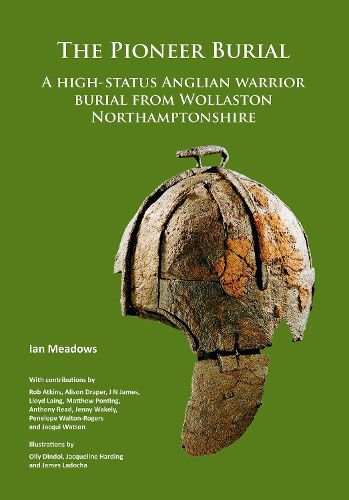Readings Newsletter
Become a Readings Member to make your shopping experience even easier.
Sign in or sign up for free!
You’re not far away from qualifying for FREE standard shipping within Australia
You’ve qualified for FREE standard shipping within Australia
The cart is loading…






MOLA (Museum of London Archaeology) undertook evaluation and subsequent excavation at Wollaston Quarry, near Wellingborough through the 1990s. These excavations took place in advance of gravel extraction on land to the north and south of Hardwater Road, Wollaston. The archaeological work found Iron Age and Roman farms arranged along a single routeway and the remains of at least two Roman vineyards. A single late 7th century grave, the Pioneer burial, lay alongside a long-lived routeway at the southern end of the quarry, close to the floodplain and any burial mound would have overlooked the River Nene. The burial was an isolated feature; the only other Saxon artefacts recovered from other parts of the quarry were limited to two scatters of pottery and two fragments of small long brooch recovered by metal detection. All were located some distance from the grave. The Pioneer burial was adjacent to the south-western corner of the later Saxon Higham Hundred boundary where it meets the River Nene. It is probable the burial had originally been within a barrow, but no evidence was found for it. Within the grave there was an individual adult of slender build probably in their early to middle 20s equipped with a boar-crested iron helmet, a pattern-welded sword, a copper alloy hanging bowl with enamelled escutcheon, an iron knife, a copper alloy clothing hook and three iron buckles. The burial contained artefacts indicative of very high status, with the early to middle Saxon helmet being at the time only the fourth to have been recovered from a burial in England.
$9.00 standard shipping within Australia
FREE standard shipping within Australia for orders over $100.00
Express & International shipping calculated at checkout
MOLA (Museum of London Archaeology) undertook evaluation and subsequent excavation at Wollaston Quarry, near Wellingborough through the 1990s. These excavations took place in advance of gravel extraction on land to the north and south of Hardwater Road, Wollaston. The archaeological work found Iron Age and Roman farms arranged along a single routeway and the remains of at least two Roman vineyards. A single late 7th century grave, the Pioneer burial, lay alongside a long-lived routeway at the southern end of the quarry, close to the floodplain and any burial mound would have overlooked the River Nene. The burial was an isolated feature; the only other Saxon artefacts recovered from other parts of the quarry were limited to two scatters of pottery and two fragments of small long brooch recovered by metal detection. All were located some distance from the grave. The Pioneer burial was adjacent to the south-western corner of the later Saxon Higham Hundred boundary where it meets the River Nene. It is probable the burial had originally been within a barrow, but no evidence was found for it. Within the grave there was an individual adult of slender build probably in their early to middle 20s equipped with a boar-crested iron helmet, a pattern-welded sword, a copper alloy hanging bowl with enamelled escutcheon, an iron knife, a copper alloy clothing hook and three iron buckles. The burial contained artefacts indicative of very high status, with the early to middle Saxon helmet being at the time only the fourth to have been recovered from a burial in England.